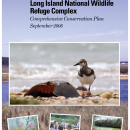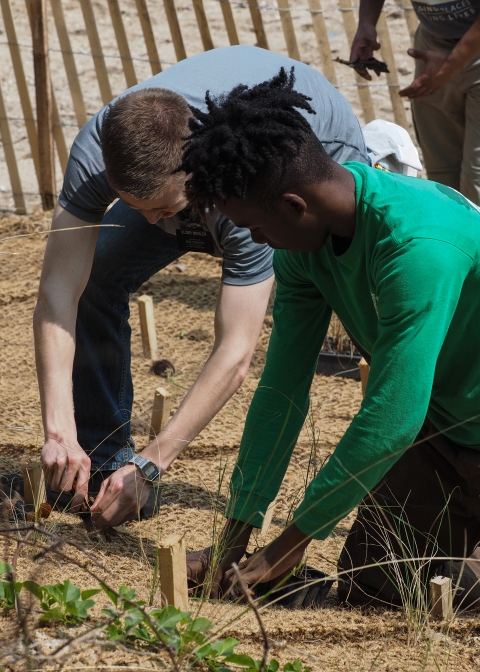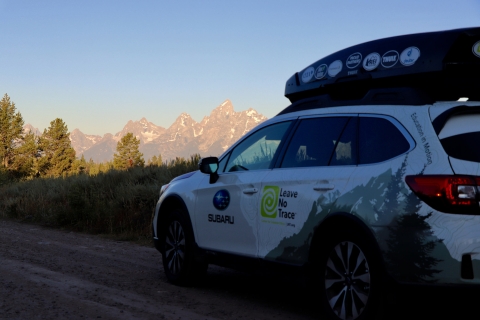What We Do
Wildlife conservation is at the heart of the National Wildlife Refuge System. It drives everything on U.S. Fish and Wildlife Service lands and waters managed within the Refuge System, from the purposes for which a national wildlife refuge national wildlife refuge
A national wildlife refuge is typically a contiguous area of land and water managed by the U.S. Fish and Wildlife Service for the conservation and, where appropriate, restoration of fish, wildlife and plant resources and their habitats for the benefit of present and future generations of Americans.
Learn more about national wildlife refuge is established to the recreational activities offered to the resource management tools used. Using conservation best practices, the Refuge System manages Service lands and waters to help ensure the survival of native wildlife species.
Refuges deploy a host of scientifically sound management tools to address biological challenges. These tools span active water management to wilderness character monitoring, all aimed at ensuring a balanced conservation approach to benefit both wildlife and people. At this field station our conservation tool box includes:
Invasive Species
Refuge staff are founding members of the Long Island Invasive Species Management Area. Networking with other members and attending periodic public meetings has helped us realize the most problematic non-native species, develop mapping standards, prioritize treatment regimens and prepare outreach materials.
Beach Clean Ups
Wildlife, and even humans, enjoy clean coastlines. While clean beaches contribute to healthy wildlife, the aesthetics of a clean beach have moral boosting appeal for humans too! Refuge staff biannually partner with a variety of local organizations and many energetic volunteers to keep the beaches of Target Rock National Wildlife Refuge free of marine debris and litter. Check the calendar of events for the next beach cleanup. Prior registration is required since snacks and equipment are provided.
Management and Conservation
Management Goals
Refuge management goals are:
- Provide and manage a diversity of high quality habitats to support breeding, migrating and/or wintering birds, threatened & endangered species, and fish.
- Maintain high quality habitats for all native wildlife and plant species.
- Establish and maintain partnerships to benefit wildlife for present and future generations
Our Projects and Research
Past Projects Include
In spring 2016, Service maintenance professionals worked to shore up an eroded bluff using coir fiber logs before constructing the new beach stairs. The specially formed Maintenance Action Team (MAT), comprised of refuge maintenance staff from as far away as Aroostook refuge in Limestone, Maine, completed the work using both Service-owned and rented heavy equipment. In summer 2016, an energetic crew of seven students from Groundwork Hudson Valley’s “Green Team” program worked with refuge staff to plant over 2000 native beachgrass plugs in order to stabliize this badly eroded coastal bluff. The experience of working alongside refuge staff on this important restoration project was inspirational and rewarding for all who were involved.
Leave No Trace designated Target Rock National Wildlife Refuge as one of their 2018 Hot Spots. Now in its sixth year, the Hot Spot Program brings solutions and prevention measures to popular natural areas around the country facing impacts associated with heavy recreational use.
As part of the Hot Spot Program, Leave No Trace professionals spent a week educating refuge staff, community partners, and the general public on how to reduce impacts to the resource. The final report generated from this program will help inform the Target Rock Visitor Services Plan, as well as the Complex’s CCP update.
Law Enforcement
The mission of the National Wildlife Refuge System Law Enforcement program is:
"Through education and enforcement we protect our employees, volunteers, and visitors; safeguard the public’s investment in facilities and equipment; and protect the integrity of the habitat and the wildlife resources of the National trust resource which is the 150 million acre National Wildlife Refuge System.”
Laws and Regulations
To protect the natural resources of the refuge and to provide all visitors with a safe and enjoyable wildlife experience, please observe all refuge signs and regulations in handouts and brochures.




